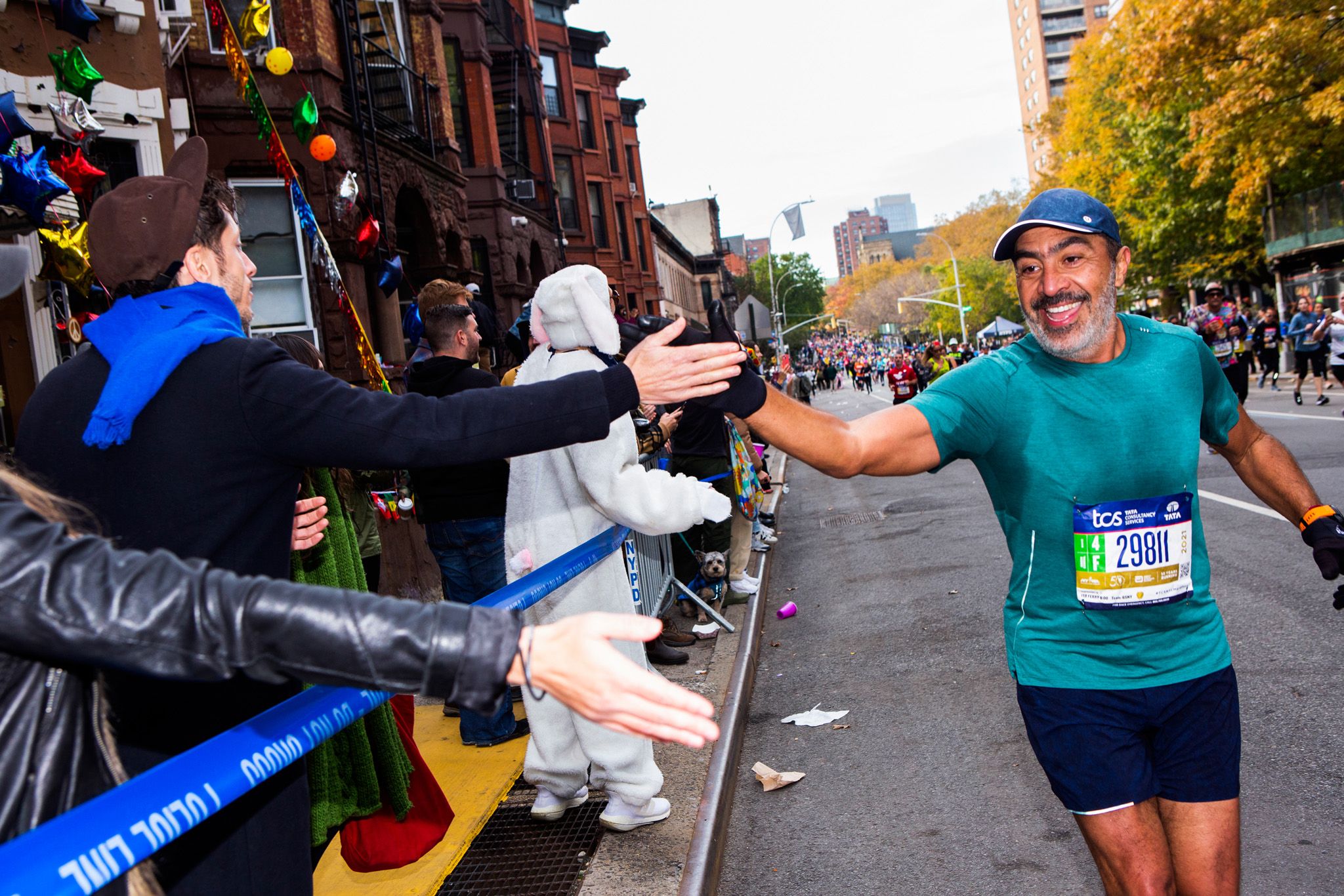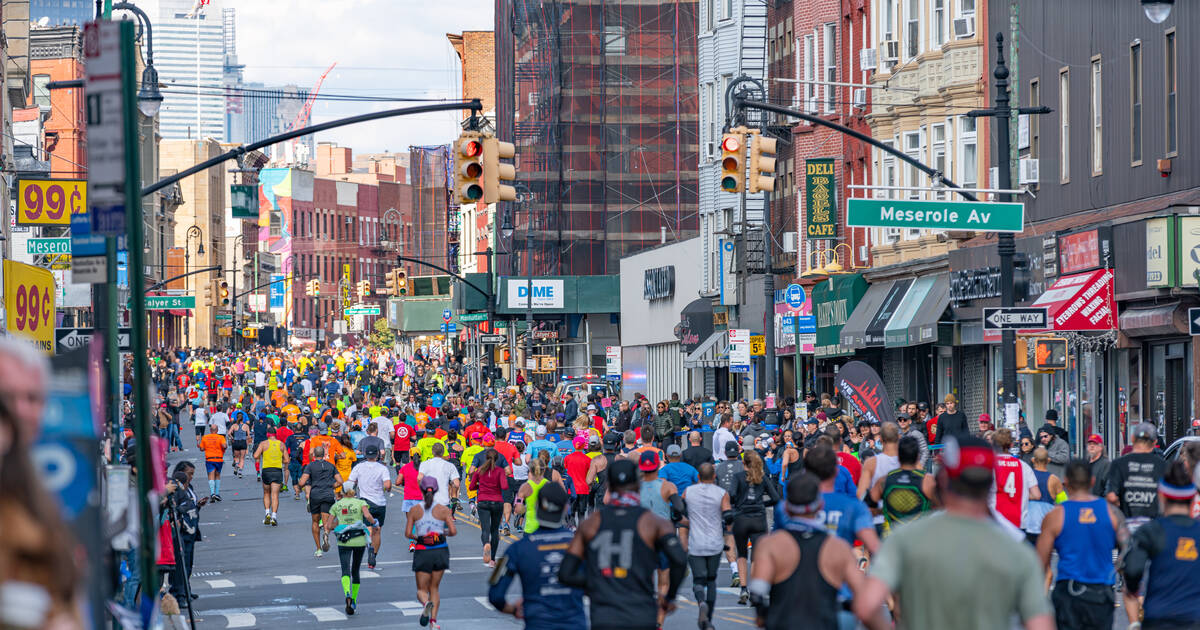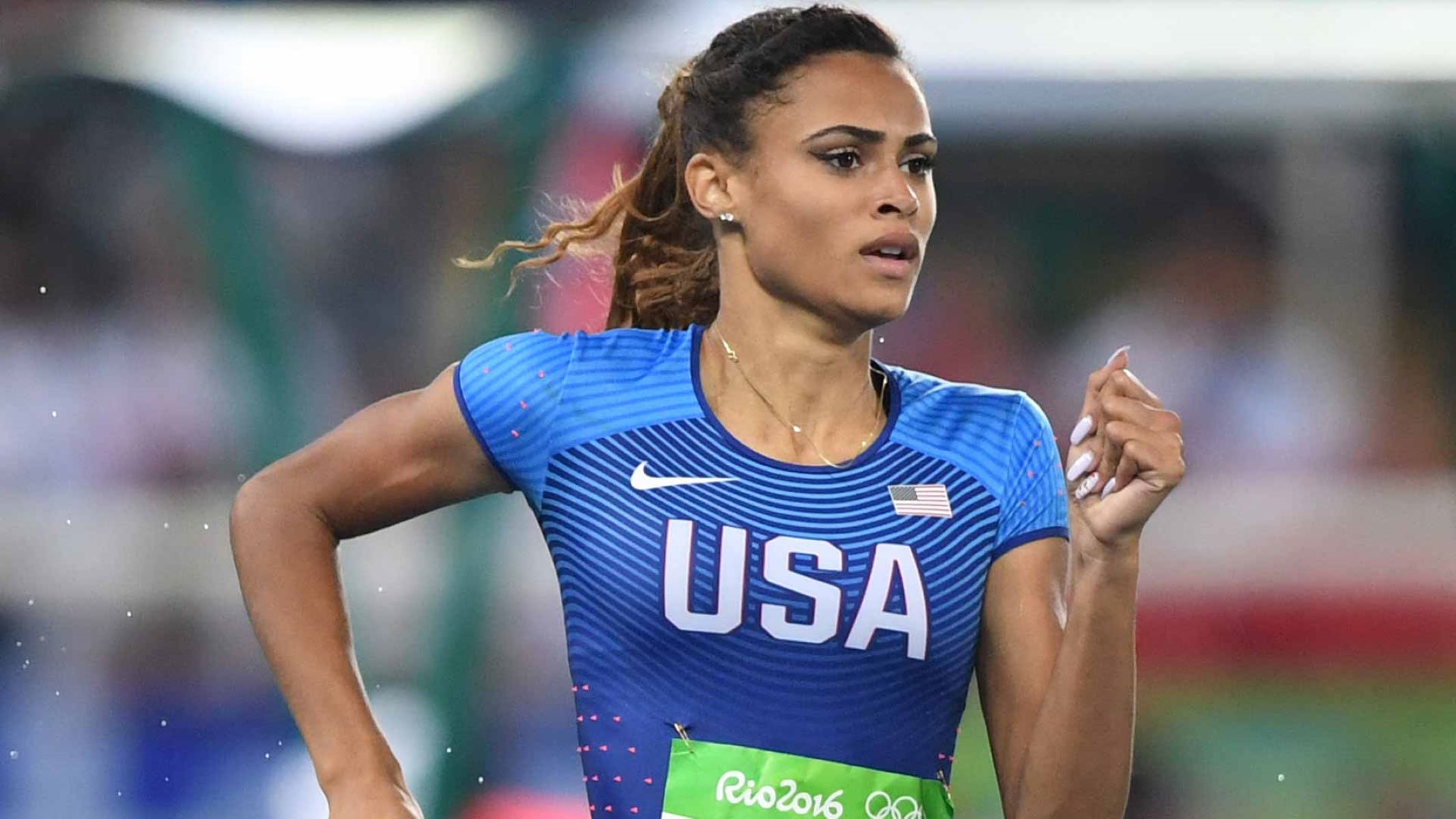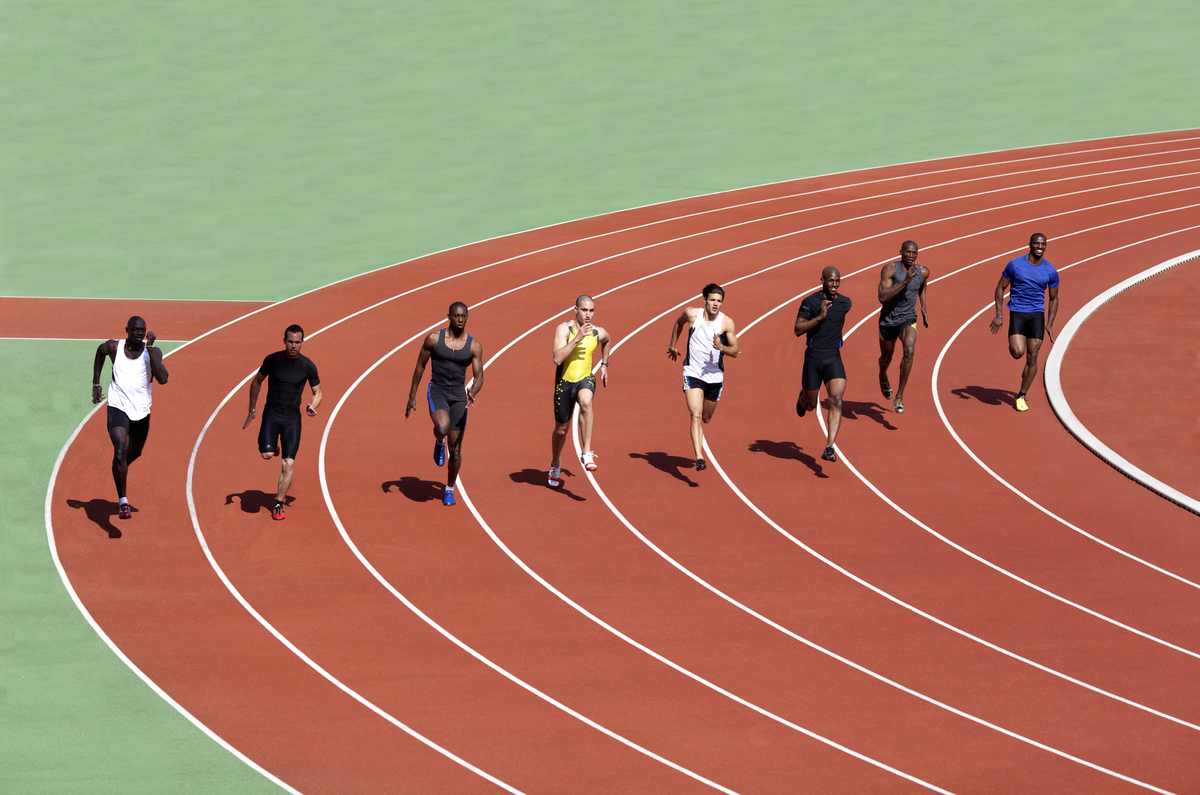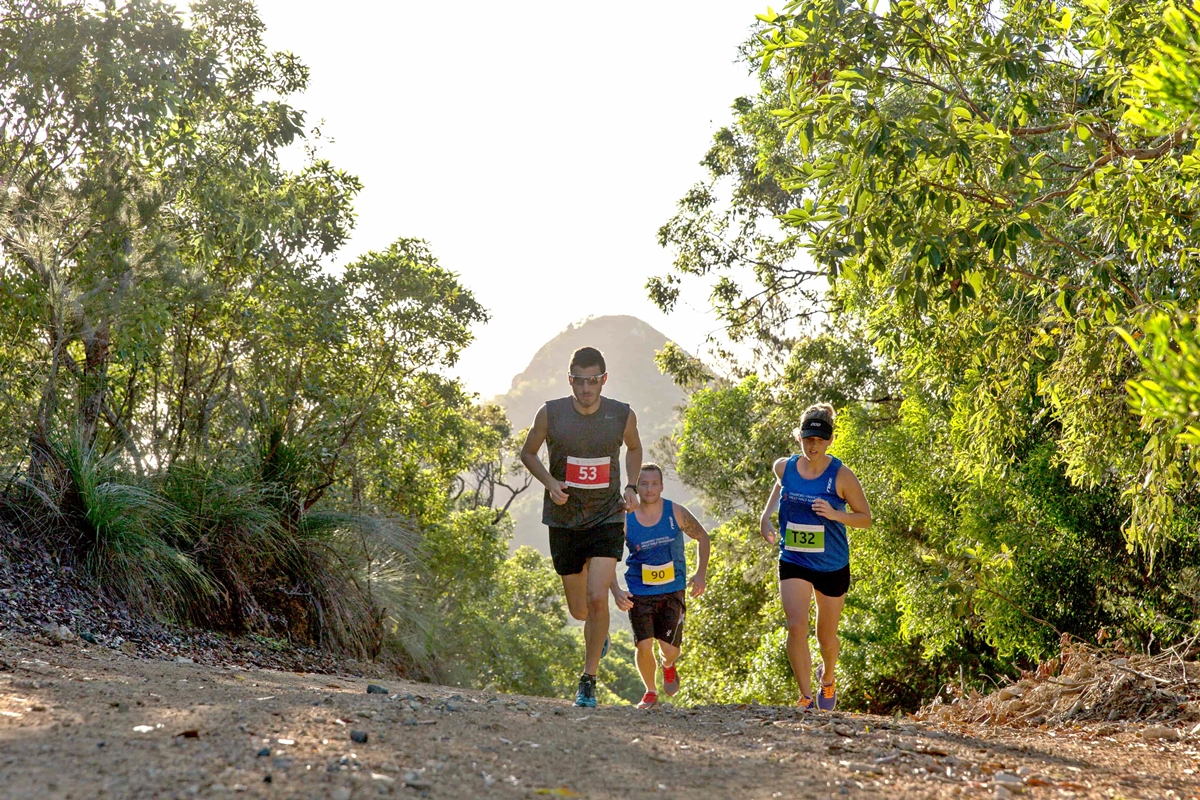Home>Misc>Featured>What Is The Biggest Marathon In The World
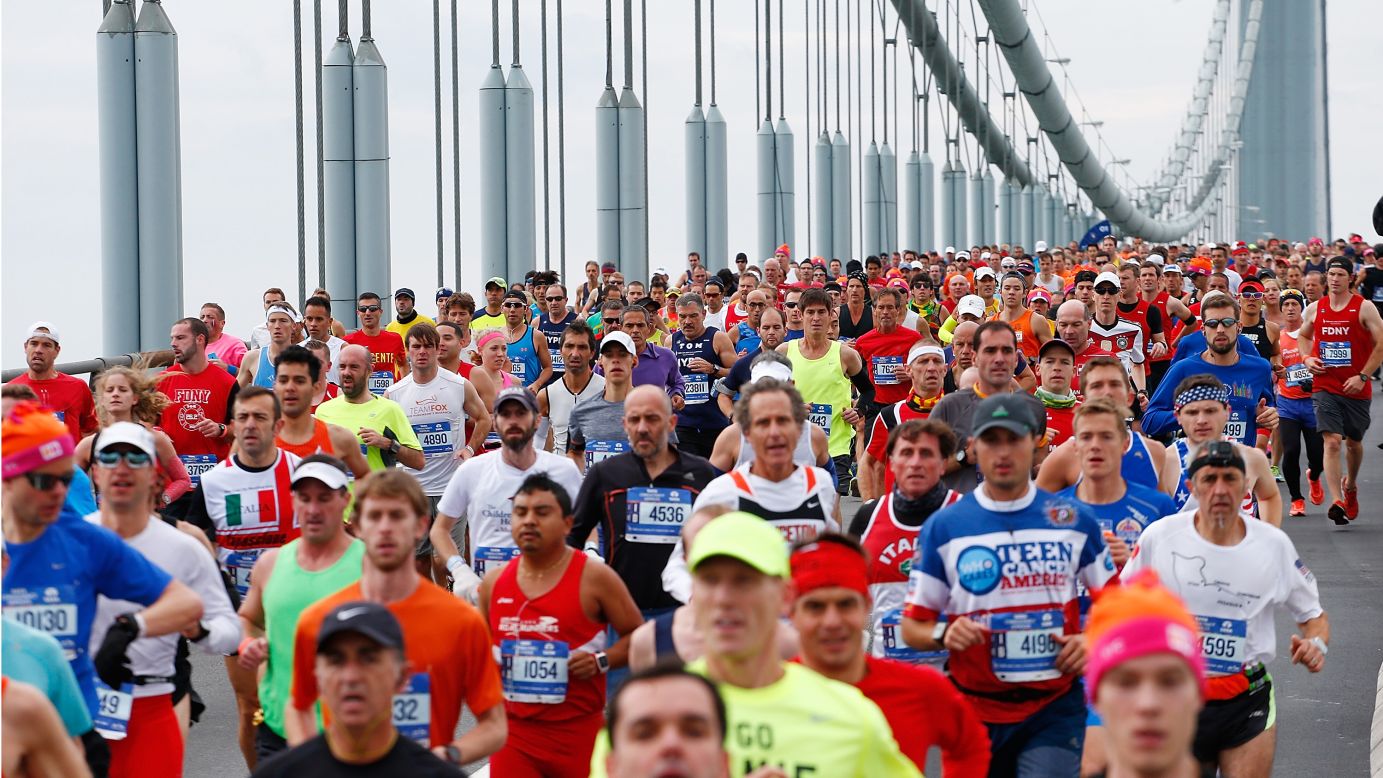

Featured
What Is The Biggest Marathon In The World
Modified: January 22, 2024
Discover the featured marathon event that holds the title for the largest marathon in the world, attracting thousands of enthusiastic runners from around the globe.
Introduction
Marathons are not only physical and mental challenges but also amazing events that bring together athletes and spectators from around the world. The passion and determination displayed by marathon runners is awe-inspiring, and the excitement that permeates the air during these events is contagious. If you’re a running enthusiast or simply curious about marathons, you may be wondering which one holds the title of the biggest marathon in the world.
In this article, we will delve into the world of marathons and explore the criteria used to determine their size. We’ll take a closer look at some of the most iconic marathons globally, including the New York City Marathon, the Tokyo Marathon, the Berlin Marathon, the London Marathon, the Boston Marathon, and the Chicago Marathon. By examining these renowned events, we’ll gain a better understanding of what it means to be the biggest marathon and discover the unique aspects that set each one apart.
Before we dive into the specific races, it’s important to understand the history and significance of marathons. The origins of marathons can be traced back to ancient Greece, where they were first introduced as a test of endurance and served as a way to honor the ancient Greek soldier, Pheidippides. Legend has it that after the Battle of Marathon in 490 BC, Pheidippides ran from the battlefield to Athens, covering a distance of approximately 26 miles, to deliver the news of the victory. Today, the marathon distance remains fixed at 26.2 miles, or 42.195 kilometers.
In modern times, marathons have gained immense popularity, attracting elite runners, amateur athletes, and recreational joggers alike. The allure of marathons lies in the personal challenge they present and the opportunity to surpass one’s limits. Additionally, marathons have become major sporting events that showcase the rich culture and spirit of the hosting cities, welcoming participants from all walks of life.
So, what exactly determines the size of a marathon? It’s not just about the number of runners participating in the race. Various factors come into play, including the course difficulty, spectator turnout, media coverage, prize money, and overall prestige. Each marathon has its own unique features that make it stand out from the rest and contribute to its reputation.
History of Marathons
The history of marathons is deeply rooted in ancient Greek warfare and mythology. The origins of the marathon distance can be traced back to the legendary tale of Pheidippides, an ancient Greek soldier, who ran from the Battle of Marathon to Athens to deliver news of victory. This legendary run covered a distance of roughly 26 miles, giving birth to the marathon as we know it today.
The story goes that in 490 BC, the Persian Empire invaded Greece, and a battle ensued in the plain of Marathon. The Athenians, alongside their allies, managed to defeat the Persians. To share the news of their triumph with the people of Athens, Pheidippides was dispatched to run the distance between the battle site and the city.
Pheidippides braved the rugged terrain and pushed his limits to deliver the message of victory. Upon reaching Athens, he shouted “Rejoice! We conquer!” before collapsing from exhaustion and passing away. His heroic efforts became the inspiration behind the modern marathon race.
Fast forward to the late 19th century when the marathon as a competitive race was revived during the first modern Olympic Games held in Athens, Greece in 1896. The organizers wanted to pay homage to the ancient roots of the games, and the marathon became a centerpiece event. The race was set to begin in the city of Marathon and end at the Olympic Stadium in Athens, covering a distance of approximately 25 miles.
However, the course was later extended to 26.2 miles during the 1908 London Olympics. This change was made to accommodate the royal family who wanted the race to start at Windsor Castle and finish in front of the royal box at the Olympic Stadium. From that point onward, the 26.2-mile distance became the standard for marathons worldwide.
The marathon, initially reserved for male athletes, opened its doors to female runners in the mid-20th century. The first woman to officially finish the Boston Marathon was Bobbi Gibb in 1966, even though she had to run unofficially as women were not allowed to compete at the time. The inclusion of women in marathons marked a significant milestone for gender equality in sports.
Since then, marathons have grown in popularity, evolving from Olympic events to major city races that attract thousands of participants from all walks of life. They have become a symbol of determination, human achievement, and the celebration of the human spirit. Today, marathons continue to captivate audiences worldwide, shining a spotlight on the endurance, perseverance, and the indomitable will of the runners who brave the distance.
Criteria for Determining the Biggest Marathon
When it comes to determining the biggest marathon in the world, several factors are taken into consideration. These criteria play a crucial role in evaluating the size and status of a marathon, highlighting its prominence in the running community and global sporting events. Here are the key factors commonly used to determine the biggest marathon:
1. Number of Participants: The number of registered runners is often the first metric considered. A marathon with a large participant base signifies its popularity and wide appeal. The more runners involved, the greater the logistical challenges and organizational efforts required to accommodate them.
2. Course Difficulty: The toughness of the course plays a significant role in assessing the stature of a marathon. Courses that are renowned for their challenging terrain and demanding weather conditions are often seen as prestigious and attract elite runners looking for a true test of their abilities.
3. Spectator Turnout: The level of spectator support and enthusiasm contributes to the overall size and atmosphere of a marathon. Marathons that draw large crowds of cheering fans create a vibrant and electrifying environment for both runners and spectators alike.
4. Media Coverage: The media attention a marathon garners is an essential factor in determining its size. Extensive coverage through television, radio, print, and digital platforms helps to increase awareness and interest in the event, elevating its status on a global scale.
5. Prize Money: The prize money offered to winners and top finishers often reflects the significance of a marathon. Higher prize amounts attract elite runners and can contribute to the overall competitiveness and prestige of the event.
6. Historical Significance: The historical importance of a marathon can also influence its prominence. Marathons with a rich heritage, such as those with a long-standing tradition or those linked to significant historical events or milestones, tend to hold a special place in the running community.
7. World Records: Marathons that have witnessed the setting of world records often earn recognition and distinction. A racecourse that provides optimal conditions for elite runners to achieve record-breaking performances adds to the allure and reputation of the marathon.
8. International Appeal: The international appeal of a marathon is another determining factor in its size. Marathons that attract participants from around the world, creating a diverse and multicultural atmosphere, showcase their global influence and appeal.
By considering these criteria, running enthusiasts and organizers can identify and acknowledge the biggest marathons in the world. The following sections will delve into some of the most prominent marathons that meet these criteria and have earned their reputation as highly esteemed global running events.
The New York City Marathon
The New York City Marathon, organized by New York Road Runners (NYRR), is one of the most iconic and highly regarded marathons in the world. Founded in 1970 and held annually since then, the race attracts runners from all over the globe, making it one of the largest marathons in terms of participants.
With its challenging course spanning all five boroughs of New York City – Staten Island, Brooklyn, Queens, the Bronx, and Manhattan – the New York City Marathon offers a unique and diverse running experience. The race starts at Staten Island and takes participants across the Verrazzano-Narrows Bridge, offering stunning views of the city skyline.
The New York City Marathon has a rich history and is renowned for its electric atmosphere. Spectator support is unparalleled, with enthusiastic crowds lining the streets throughout the entire course, cheering on the runners and providing motivation and encouragement.
In addition to its massive participant base and spirited spectators, the New York City Marathon boasts extensive media coverage, both locally and globally. The marathon is televised live, allowing millions of viewers worldwide to witness the journey of the runners as they navigate the challenging course and cross the finish line in Central Park.
Prize money is another significant aspect of the New York City Marathon. The race offers substantial financial rewards for the top finishers, attracting elite runners from around the world who strive to claim victory and secure a share of the prize pool.
Moreover, the New York City Marathon holds historical significance as the largest marathon in terms of finishers. In recent years, it has consistently seen tens of thousands of participants cross the finish line, setting records for the number of finishers in a single race.
This marathon’s international appeal is also noteworthy, with runners from over 100 countries joining the event. The diversity of participants and the vibrant multicultural atmosphere make the New York City Marathon an incredible celebration of unity and athletic achievement.
Overall, the New York City Marathon’s combination of its sheer size, challenging course, enthusiastic spectators, extensive media coverage, substantial prize money, historical significance, and international appeal firmly establish it as one of the biggest marathons in the world.
The Tokyo Marathon
The Tokyo Marathon, held annually in Tokyo, Japan, is a world-renowned race that has gained immense popularity and a reputation as a major marathon event. Known for its fast and flat course, the Tokyo Marathon attracts both elite runners and enthusiastic amateurs from around the globe.
Since its inception in 2007, the Tokyo Marathon has grown in size and stature, becoming one of the largest marathons in the world. The race typically hosts tens of thousands of participants, making it a truly international event that brings together a diverse range of runners.
The Tokyo Marathon route showcases the city’s vibrant and bustling atmosphere. Runners start at the Tokyo Metropolitan Government Building and pass by famous landmarks such as the Imperial Palace, Tokyo Tower, and Asakusa Temple. The course provides a mix of modern cityscapes and traditional cultural sights, offering a unique and dynamic running experience.
The marathon is known for its exceptional organization and efficient logistics, ensuring a smooth race day experience for participants. From ample aid stations to top-notch medical support, the Tokyo Marathon is committed to providing a safe and enjoyable race environment.
Spectators play a significant role in the success of the Tokyo Marathon. The streets along the course are lined with enthusiastic fans who cheer on the runners with tremendous energy and support. Their enthusiasm creates an electric atmosphere, motivating participants to push through the grueling 26.2-mile journey.
Media coverage of the Tokyo Marathon is extensive, with television broadcasts and online streaming reaching millions of viewers worldwide. The race garners attention from both local and international media outlets, further cementing its reputation as a prominent marathon on the global stage.
The Tokyo Marathon offers substantial prize money, attracting elite runners who compete fiercely for the top honors. The financial rewards, combined with the potential for record-breaking performances, make the Tokyo Marathon a highly competitive race that draws elite athletes from around the world.
As one of the six World Marathon Majors, the Tokyo Marathon holds great prestige and significance in the marathon community. It is a part of an elite group of marathons that showcases the highest level of competition, as well as the rich culture and tradition of the host city.
In summary, the Tokyo Marathon’s combination of its large participant base, fast and flat course, enthusiastic spectators, extensive media coverage, substantial prize money, and inclusion in the World Marathon Majors solidifies its position as one of the biggest and most prestigious marathons worldwide.
The Berlin Marathon
The Berlin Marathon, held annually in the capital city of Germany, is widely recognized as one of the most prestigious and fastest marathons in the world. Established in 1974, this marathon has earned a reputation for its exceptional organization, record-breaking performances, and enthusiastic crowd support.
The Berlin Marathon course is known for its flat and fast profile, making it an ideal race for runners aiming to achieve personal best times or even break world records. The route showcases the rich history and diverse architecture of Berlin, taking participants through iconic landmarks such as the Brandenburg Gate, the Berlin Cathedral, and the Charlottenburg Palace.
One of the defining features of the Berlin Marathon is its incredible spectator turnout. Thousands of cheering fans line the streets, creating a vibrant and energetic atmosphere that motivates and uplifts the runners. The Berliners are renowned for their passion and support, making the race an unforgettable experience for participants.
Media coverage of the Berlin Marathon is extensive, with live broadcasts and streaming reaching millions of viewers globally. The race attracts attention from both local and international media outlets, contributing to its status as a highly regarded marathon on the global stage.
The Berlin Marathon offers substantial prize money, making it an attractive race for elite runners from around the world. The incentive to compete for the top prizes, combined with the flat and fast course, often results in remarkable performances and the potential for new world records.
One of the most celebrated moments in the history of the Berlin Marathon occurred in 2013 when the Kenyan runner, Wilson Kipsang, broke the previous world record, finishing the race in a remarkable time of 2 hours, 3 minutes, and 23 seconds. This achievement further solidified the Berlin Marathon’s reputation as a platform for world-class performances.
Moreover, the Berlin Marathon is part of the Abbott World Marathon Majors, an exclusive series of six major marathons that represent the pinnacle of the marathon sport. This affiliation adds to the prestige and prominence of the Berlin Marathon, attracting top athletes and enthusiasts alike.
In summary, the Berlin Marathon’s combination of a fast course, enthusiastic crowd support, extensive media coverage, substantial prize money, and its status as part of the Abbott World Marathon Majors establish it as one of the most significant and highly regarded marathons in the world.
The London Marathon
The London Marathon, held annually in the vibrant and multicultural city of London, is one of the most prestigious and well-known marathons in the world. Established in 1981, the event has grown exponentially in size and popularity, attracting elite athletes, amateur runners, and enthusiastic spectators.
The London Marathon course offers a scenic and historic journey that highlights the city’s iconic landmarks. Runners start in Greenwich and cross Tower Bridge before making their way through famous sites such as the Tower of London, the London Eye, and Buckingham Palace, before ultimately finishing on The Mall.
One of the distinguishing features of the London Marathon is its enormous spectator turnout. Londoners and visitors alike flock to the sidelines, creating a buzzing and supportive atmosphere throughout the course. Their unwavering encouragement and cheers provide much-needed motivation for the participants, enhancing the overall race experience.
The media attention surrounding the London Marathon is immense, with extensive television coverage and live streaming reaching millions of viewers worldwide. The race attracts the spotlight from both local and international media outlets, making it an incredibly high-profile event on the global running calendar.
The London Marathon has a reputation for its charitable fundraising efforts. It is one of the largest annual fundraising events in the world, with participants raising millions of pounds for various charitable causes. The marathon provides a platform for individuals to contribute to society while pursuing their personal running goals.
In terms of elite competition, the London Marathon attracts top-tier athletes vying for the coveted title. The race is known for its exceptional field of international elite runners, often resulting in fiercely competitive races and impressive times.
Moreover, the London Marathon is an inclusive event that celebrates diversity and promotes awareness of social issues. It includes the London Mini Marathon, a race for young athletes, as well as the Marathon Wheelchair events, showcasing the talents of disabled athletes and promoting inclusivity in the sport.
As one of the six World Marathon Majors, the London Marathon holds great prestige and significance. It is part of an exclusive group of marathons that symbolize the highest level of competition and attract elite runners from around the world.
In summary, the London Marathon’s combination of a scenic course, enthusiastic spectator support, extensive media coverage, charitable fundraising efforts, high-level competition, and inclusion in the World Marathon Majors solidifies its standing as one of the most prestigious and prominent marathons globally.
The Boston Marathon
The Boston Marathon is one of the oldest and most prestigious marathons in the world. Founded in 1897, it is steeped in history and holds a special place in the hearts of runners and spectators alike. Known for its challenging course and rich tradition, the Boston Marathon is an iconic event that attracts elite athletes and dedicated runners from all corners of the globe.
The race takes participants on a storied journey, starting in the suburban town of Hopkinton and culminating in Boston’s downtown area. Along the hilly and challenging course, runners encounter iconic landmarks such as the Newton Hills and the famous “Heartbreak Hill,” which tests the resolve of even the most seasoned runners.
One of the defining features of the Boston Marathon is its qualifying standards. Unlike other marathons where anyone can enter, the Boston Marathon requires participants to meet specific time qualifications based on their age and gender. This stringent entry requirement adds to the race’s allure and elevates the competition to a higher level.
Spectator support at the Boston Marathon is exceptional. Bostonians and visitors line the entire course, cheering on the runners with unparalleled enthusiasm. The “Wellesley Scream Tunnel” is a highlight along the course, where students from Wellesley College gather to create an energizing and deafening wall of sound, providing a boost to the runners.
The media coverage surrounding the Boston Marathon is extensive, with live television broadcasts and online streaming reaching a global audience. The race garners significant attention from both local and international media outlets, showcasing the enduring popularity and significance of the event.
The Boston Marathon holds historical significance as the oldest annual marathon in the world. It is deeply ingrained in the culture of Boston and has become a cherished part of the city’s identity. The marathon also holds a poignant place in history due to the tragic bombing incident during the 2013 race, which demonstrated the resilience and unity of the running community.
Although the Boston Marathon features top-tier elite athletes, it also celebrates the spirit of inclusivity through its inclusion of a large number of qualified amateur runners who strive to achieve their Boston qualifying times. This blend of elite and amateur participants creates a unique and diverse atmosphere that adds to the race’s charm.
Overall, the Boston Marathon’s combination of a challenging course, strict qualifying standards, enthusiastic spectator support, extensive media coverage, historical significance, and celebration of both elite and amateur runners solidifies its position as one of the most esteemed and iconic marathons in the world.
The Chicago Marathon
The Chicago Marathon, held annually in the vibrant city of Chicago, is one of the major marathons that attracts runners from all over the world. With its flat and fast course, the Chicago Marathon is renowned for facilitating personal best times and is an ideal race for runners of all abilities.
The race, established in 1977, takes participants on a scenic tour of Chicago’s diverse neighborhoods. Starting and finishing in Grant Park, the course showcases iconic landmarks such as the Magnificent Mile, the Old Town neighborhood, and the charming streets of Boystown, providing a memorable and enjoyable running experience for participants.
One of the standout features of the Chicago Marathon is the incredible spectator support along the entire course. The streets are lined with enthusiastic fans who create a festive and energetic atmosphere, encouraging runners with cheers, signs, and even impromptu dance parties. The enthusiastic crowd support acts as a source of motivation and inspiration for participants.
Media coverage of the Chicago Marathon is substantial, reaching millions of viewers through television broadcasts and online streaming. The race’s international reputation and high-profile elite field contribute to its extensive visibility and popularity among running enthusiasts.
The Chicago Marathon offers a generous prize purse, attracting top-level elite runners who compete for the hefty financial rewards. The allure of the prize money, combined with the flat and fast course, often results in fiercely competitive races and the potential for record-breaking performances.
Furthermore, the Chicago Marathon is known for its impeccable organization and excellent race day logistics. Participants benefit from the abundance of aid stations along the course, efficient race packet distribution, and comprehensive medical support, ensuring a safe and enjoyable experience for all runners.
The marathon has a rich history and has embraced technological advancements to enhance the participant experience. It was one of the first marathons to introduce chip timing, allowing runners to receive accurate personal race results and splits.
As one of the six World Marathon Majors, the Chicago Marathon holds a place of prominence in the marathon community. Its inclusion in this prestigious series further solidifies its status as a major global marathon and attracts elite runners looking to compete at the highest level.
In summary, the Chicago Marathon’s combination of a flat and fast course, enthusiastic spectator support, extensive media coverage, substantial prize money, exceptional organization, and inclusion in the World Marathon Majors make it a significant and highly regarded marathon on the global running stage.
The Abbott World Marathon Majors
The Abbott World Marathon Majors (AbbottWMM) is a series of six major marathon events that collectively represent the pinnacle of the marathon world. The series comprises the Boston, London, Berlin, Chicago, Tokyo, and New York City Marathons, and has become synonymous with excellence, high-level competition, and global prestige.
Established in 2006, the AbbottWMM brought together the world’s top marathons to create a unified and prestigious championship series. This global platform attracts elite athletes, provides them with a collective goal, and rewards their exceptional performances.
Runners who compete in the AbbottWMM receive points based on their finishing times in the six marathons. The male and female runners with the highest point totals at the end of each two-year cycle are crowned the AbbottWMM series champions, earning additional recognition and financial rewards.
The AbbottWMM embodies the celebration of human achievement, and its significance extends far beyond the winners. It recognizes and celebrates the dedication, determination, and perseverance of all participants who push their personal limits and complete the arduous marathon distances.
In addition to recognizing elite runners, the AbbottWMM has a strong commitment to social and environmental causes. The series actively promotes sustainability initiatives, raises funds for charitable organizations, and fosters community engagement. This dedication to making a positive impact aligns with the values of the participating marathons and underscores the importance of giving back.
The AbbottWMM has significantly elevated the profile and standards of marathon running, driving athletes to constantly push the boundaries of human capability. The series has witnessed remarkable performances and world records that have further solidified the reputation of these marathons as some of the most prestigious in the world.
Throughout the AbbottWMM series, fans and followers are treated to enthralling races and captivating storylines. The collective nature of the series adds an extra layer of excitement and anticipation as runners chase points, records are broken, and new champions emerge.
By uniting these six iconic marathons, the Abbott World Marathon Majors has elevated the sport of marathon running to new heights. The series provides a platform for showcasing athletic prowess, fostering community engagement, and encouraging a global appreciation for the incredible accomplishments of marathon runners.
In summary, the Abbott World Marathon Majors represents the pinnacle of marathons and embodies the spirit of athletic excellence. Through its unification of the world’s top marathons and its commitment to charitable causes, sustainability, and community engagement, this championship series has solidified its position as a defining force in the running world.
Conclusion
Marathons are not just races; they are vibrant spectacles that bring runners, spectators, and communities together from around the world. The quest to determine the biggest marathon is subjective, as each event holds its own unique appeal and significance. However, by examining various criteria such as the number of participants, course difficulty, spectator turnout, media coverage, prize money, historical importance, international appeal, and inclusion in the Abbott World Marathon Majors, we can identify some of the most prominent marathons worldwide.
The New York City Marathon stands out for its massive participant base, challenging course, enthusiastic spectators, extensive media coverage, rich history, and international appeal. The Tokyo Marathon is renowned for its fast and flat course, exceptional organization, enthusiastic spectator support, global media coverage, substantial prize money, and inclusion in the World Marathon Majors. The Berlin Marathon, with its flat and fast course, passionate spectators, extensive media coverage, substantial prize money, and the potential for record-breaking performances, has solidified its place as a major global marathon. The London Marathon, known for its scenic course, enthusiastic spectators, extensive media coverage, charitable fundraising efforts, inclusion in the World Marathon Majors, and celebration of inclusivity, has become a symbol of pride for the city. Lastly, the Chicago Marathon, with its flat and fast course, enthusiastic spectators, extensive media coverage, exceptional organization, and inclusion in the World Marathon Majors, has established itself as a prominent marathon on the global stage.
Collectively, these marathons highlight the extraordinary achievements, dedication, and determination of runners who take on the challenge of 26.2 miles. They showcase the power of the human spirit, the unity of communities, and the celebration of athletic excellence. Whether it’s the sheer size, the history, the course difficulty, or the atmosphere, each marathon delivers its own unique experience that captivates both runners and spectators.
As the world continues to embrace the sport of marathon running, these iconic races will undoubtedly inspire countless individuals to strive for greatness. The legacy of marathons will continue to grow, fostering a sense of camaraderie, pushing the boundaries of human capability, and showcasing the countless stories of triumph and determination along the way.

